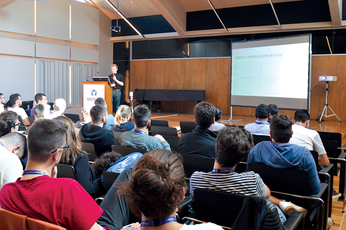Space science for everyone at the Open Source CubeSat Workshop
CubeSat Workshop

The CubeSat community gathered in Athens, Greece to explore the possibilities for open hardware and open source software in space.
The Open Source CubeSat Workshop took place at the Athens Conservatory in Athens, Greece on October 14-18, 2019 [1]. The LibreSpace Foundation [2], which is sponsored by the European Union and the European Space Agency, organized the event. The general philosophy of the LibreSpace Foundation is to remove the barriers of confidentiality and secrecy involved in satellite development and to facilitate sharing of information on how to build and operate CubeSats.
CubeSats are miniature satellites used for scientific research in space [3] [4]. The most basic CubeSat is a 10cm cube that weighs a maximum of 1.33 kilograms (2.9 pounds). The tiny CubeSat is small enough to ride along as a secondary payload on government and commercial space launches. CubeSats have also been launched from the International Space Station. In all, more than 1,100 CubeSats have been launched into space, carrying a variety of experiments – many created by university students and amateur scientists.

[...]
Buy this article as PDF
(incl. VAT)
